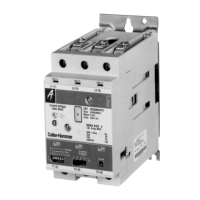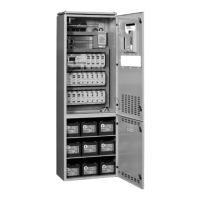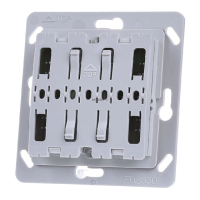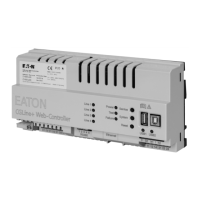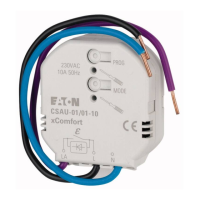IB01602009E For more information visit: www.eatonelectrical.com
Instruction Booklet
Effective: April 2006 Page 23
ATC-300 Automatic
Transfer Switch Controller
Section 7: Troubleshooting and
Maintenance
7.1 Level of Repair
This manual is written with the assumption that only ATS trou-
bleshooting will be performed. If the cause of malfunction is
traced to an ATC-300, the unit should be replaced with a new
unit. The malfunctioning unit should then be returned to EATON
Electrical for factory repairs.
7.2 ATC-300 Controller Troubleshooting
The Troubleshooting Guide (Table 3) is intended for service per-
sonnel to identify whether a problem being observed is external
or internal to the unit. For assistance with this determination,
contact EATON Electrical. If a problem is identified to be internal,
the unit should be returned to the factory for replacement.
Table 3. Troubleshooting Guide
.
NOTICE
WHILE PERFORMING TESTING, IF AN UNDESIRED OR UNDOCU-
MENTED RESULT OCCURS, FIRST CONTACT THE LOCAL GENSET
DEALER. IF THE RESULT IS NOT CORRECTED, CONTACT THE
EATON POWER QUALITY TECHNICAL SUPPORT CENTER AT
1-800-354-2070.
SYMPTOM PROBABLE CAUSE POSSIBLE SOLUTION(S)
All front panel indicator LED’s are off. Control power is deficient or absent.
ATC-300 is malfunctioning.
Verify that control power is connected at J7 and that it is within
specifications.
Replace the unit.
“Unit Status” LED is not blinking. Control power is deficient or absent.
ATC-300 is malfunctioning.
Verify that control power is connected at J7 and that it is within
specifications.
Replace the unit.
One or more voltage phases read incorrectly. Incorrect wiring.
ATC-300 is malfunctioning.
Verify voltage with multimeter. Check wiring.
Replace the unit.
Verify ground connection at J-5, Pin 12
Front panel pushbuttons do not work. Bad connection inside the ATC-300. Replace the unit.
Unit did not accept new setpoints via front panel. Operator error.
No pushbuttons pressed for 2.5 minutes.
Enter the correct Password and change the setpoints.
Avoid intervals of 2.5 minutes of inactivity with pushbuttons
when changing setpoints.
Source 1 or Source 2 is not available when it should
be.
Voltage and/or frequency are not within setpoint values. Verify voltage and/or frequency with multimeter. Check the pro-
grammed setpoint values.
Unit displays “LOCK-OUT”. Circuit breaker tripped.
Lockout circuit wiring problem.
Check for a overload/short circuit condition
Check lockout circuit wiring.
Unit displays “SOURCE 1 DEVICE”. Source 1 breaker/contactor did not open when it was commanded to open
(within 6 seconds).
Source 1 breaker/contactor did not close when it was commanded to close
(within 6 seconds).
Source 1 closed contacts did not open when Source 1 breaker opened
(within 6 seconds).
Source 1 closed contacts did not close when Source 1 breaker closed
(within 6 seconds).
Check the Source 1 circuit breaker shunt trip (ST) wiring.
Check the Source 1 circuit breaker spring release (SR) wiring.
Check the Source 1 closed control input wiring on J-4, Pins 1
and 2 and J-8, Pins 1 and 2.
Check the Source 1 closed control input wiring on J-4, Pins 1
and 2 and J-8, Pins 1 and 2.
Unit displays “SOURCE 2 DEVICE”. Source 2 breaker/contactor did not open when it was commanded to open
(within 6 seconds).
Source 2 breaker/contactor did not close when it was commanded to close
(within 6 seconds).
Source 2 closed contacts did not open when Source 2 breaker opened
(within 6 seconds).
Source 2 closed contacts did not close when Source 2 breaker closed
(within 6 seconds).
Check the Source 2 circuit breaker shunt trip (ST) wiring.
Check the Source 2 circuit breaker spring release (SR) wiring.
Check the Source 2 closed control input wiring on J-4, Pins 3
and 4 and J-8, Pins 3 and 4.
Check the Source 2 closed control input wiring on J-4, Pins 3
and 4 and J-8, Pins 3 and 4.
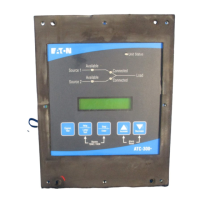
